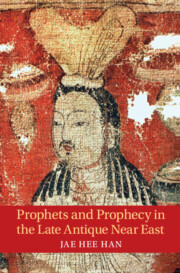Book contents
- Prophets and Prophecy in the Late Antique Near East
- Prophets and Prophecy in the Late Antique Near East
- Copyright page
- Dedication
- Contents
- Acknowledgments
- Introduction
- 1 Inventing Prophethood?
- 2 Contextualizing Manichaean Prophetology in the Syro-Mesopotamian Borderlands
- 3 “Impregnated by the Hands of God”
- 4 Listening to the Prophet
- 5 Toward a New Prognosis
- 6 Angelic Contemplation in the Sar Torah and the Prognostic Turn
- Conclusion
- Bibliography
- Index
4 - Listening to the Prophet
Late Antique Ideologies of Oral Revelation
Published online by Cambridge University Press: 26 October 2023
- Prophets and Prophecy in the Late Antique Near East
- Prophets and Prophecy in the Late Antique Near East
- Copyright page
- Dedication
- Contents
- Acknowledgments
- Introduction
- 1 Inventing Prophethood?
- 2 Contextualizing Manichaean Prophetology in the Syro-Mesopotamian Borderlands
- 3 “Impregnated by the Hands of God”
- 4 Listening to the Prophet
- 5 Toward a New Prognosis
- 6 Angelic Contemplation in the Sar Torah and the Prognostic Turn
- Conclusion
- Bibliography
- Index
Summary
In this chapter, I contextualize the discourse of orality as the privileged medium of revelation through three corpora; rabbinic idea of Oral Torah, the Manichaean claim that the Kephalaia contain Mani’s Oral Revelation not found in his Written Revelations, and the Pseudo-Clementine’s argument that only Orality (not vision) can guarantee prophetic truth. I ultimately argue that all three drew from a common fund of discursive tools to thematize orality as a privileged site of revelation. After a summary of contemporary discussions on rabbinic Oral Torah, I show how the Kephalaia itself emerged from an “Oral Performative” contexts that was largely independent of textual exegesis of Mani’s books. I argue that, like the rabbis, the Manichaeans privileged the orality because it allowed them to claim that they were simply continuing the revelation that Mani had begun. I then turn to the Ps.-Clementine Homilies and show it thematizes orality in ways that are surprisingly congruent with both the rabbis and the Manichaeans.
Keywords
- Type
- Chapter
- Information
- Prophets and Prophecy in the Late Antique Near East , pp. 155 - 196Publisher: Cambridge University PressPrint publication year: 2023

